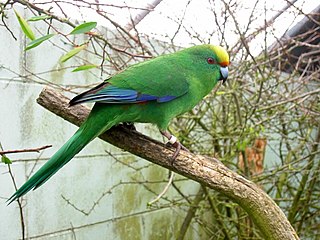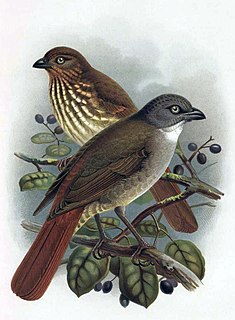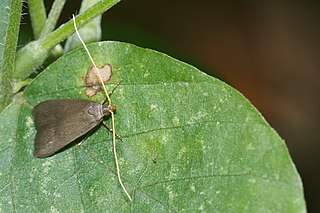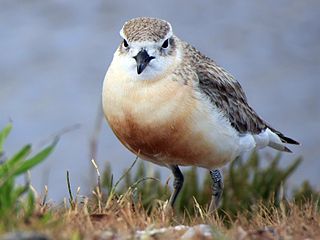
The bushwren, bush wren, or mātuhituhi in Māori, was a very small and almost flightless bird that was endemic to New Zealand. It had three subspecies on each of the major islands of New Zealand, the North Island, South Island, and Stewart Island and nearby smaller islands. The species disappeared gradually after the introduction of invasive mammalian predators, last being seen on the North Island in 1955 and the South Island in 1968. Attempts were made to save the remaining population on small islands off Stewart Island, but they ultimately failed with the death of the last remaining known birds in 1972.

The takahē, also known as the South Island takahē or notornis, is a flightless bird indigenous to New Zealand, and the largest living member of the rail family. It was hunted extensively by Māori, but was not named and described by Europeans until 1847, and then only from fossil bones. In 1850 a living bird was captured, and three more collected in the 19th century. After another bird was captured in 1898, and no more were to be found, the species was presumed extinct. Fifty years later, however, after a carefully planned search, takahē were dramatically rediscovered in 1948 by Geoffrey Orbell in an isolated valley in the South Island's Murchison Mountains. The species is now managed by the New Zealand Department of Conservation, whose Takahē Recovery Programme maintains populations on several offshore islands as well as Takahē Valley. It has now been reintroduced to a second mainland site in Kahurangi National Park. Although takahē are still a threatened species, their NZTCS status was downgraded in 2016 from Nationally Critical to Nationally Vulnerable. The population is 418 and is growing by 10 percent per year.

Malherbe's parakeet, usually known as the orange-fronted parakeet, is a small parrot endemic to New Zealand. In New Zealand it is always known as the orange-fronted parakeet, a name it shares with a species from Central America, while in the rest of the world it is known as Malherbe's parakeet. Restricted to a few valleys in the South Island and four offshore islands, its population declined to around 200 in the 1990s, and it is considered critically endangered.

The laughing owl, also known as whēkau or the white-faced owl, was an endemic owl of New Zealand. Plentiful when European settlers arrived in New Zealand, its scientific description was published in 1845, but it was largely or completely extinct by 1914. The species was traditionally considered to belong to the monotypic genus SceloglauxKaup, 1848, although recent genetic studies indicate that it belongs with the boobook owls in the genus Ninox.

The Pacific reef heron, also known as the eastern reef heron or eastern reef egret, is a species of heron found throughout southern Asia and Oceania.

The South Island piopio also known as the New Zealand thrush, was a passerine bird of the family Oriolidae.

The North Island piopio was a passerine bird of the family Oriolidae. The North Island piopio is now considered to be extinct.

The Pacific long-tailed cuckoo, also known as the long-tailed cuckoo, long-tailed koel, sparrow hawk, home owl, screecher, screamer or koekoeā in Māori, is a species of the Cuculidae bird family. It is a migratory bird that spends spring and summer in New Zealand, its only breeding place, and spends winter in the Pacific islands. It is a brood parasite, laying its eggs in the nests of other bird species and leaving them to raise its chicks.
The Ornithological Society of New Zealand (OSNZ), also known as Birds New Zealand, is a non-profit organisation dedicated to the study of birds and their habitats in the New Zealand region. Founded in 1940, it caters to a wide variety of people interested in the birds of the region, from professional ornithologists to casual birdwatchers.

The Lecithocerinae are a subfamily of small moths in the family Lecithoceridae. They are found worldwide, but most species occur in South Asia. The subfamily is characterized by the male genitalia with a bridge-like structure connecting the tegumen and the valva, and the uncus almost always is vestigal with two lobes at the dorsal base, only exceptionally united into a broad plate, but never as a thorn or spine.

Sarisophora is a genus of moths in the family Lecithoceridae.

Motutakapu is a rugged islet in the Hauraki Gulf of New Zealand, lying some 5 km off the west coast of the Coromandel Peninsula. Only 120 m long by 60 m wide, it is home to a breeding colony of Australasian gannets and has been identified as an Important Bird Area by BirdLife International. Surveys of breeding gannets there in the mid-20th century showed an increase from about 200 pairs in 1928 to 400 pairs in 1947, while the BirdLife assessment was based on 1980-1981 surveys showing about 4500 pairs.
Sarisophora leptoglypta is a moth in the family Lecithoceridae. It was described by Edward Meyrick in 1904. It is found in Australia, where it has been recorded from Queensland.
Sarisophora beckerina is a moth in the family Lecithoceridae. It was described by Kyu-Tek Park in 2012. It is found in Papua New Guinea.
Sarisophora cyanostigmatis is a moth in the family Lecithoceridae. It was described by Kyu-Tek Park in 2012. It is found in Papua New Guinea.
Sarisophora designata is a moth in the family Lecithoceridae. It was described by Kyu-Tek Park in 2012. It is found in Papua New Guinea.
Sarisophora hadroides is a moth in the family Lecithoceridae. It was described by Kyu-Tek Park in 2012. It is found in Papua New Guinea.
Sarisophora melanotata is a moth in the family Lecithoceridae. It was described by Kyu-Tek Park in 2012. It is found in Papua New Guinea.
Sarisophora pyrrhotata is a moth in the family Lecithoceridae. It was described by Kyu-Tek Park in 2012. It is found in Papua New Guinea.

The northern New Zealand dotterel or northern red-breasted plover is a shorebird which breeds exclusively on beaches in New Zealand's North Island.











